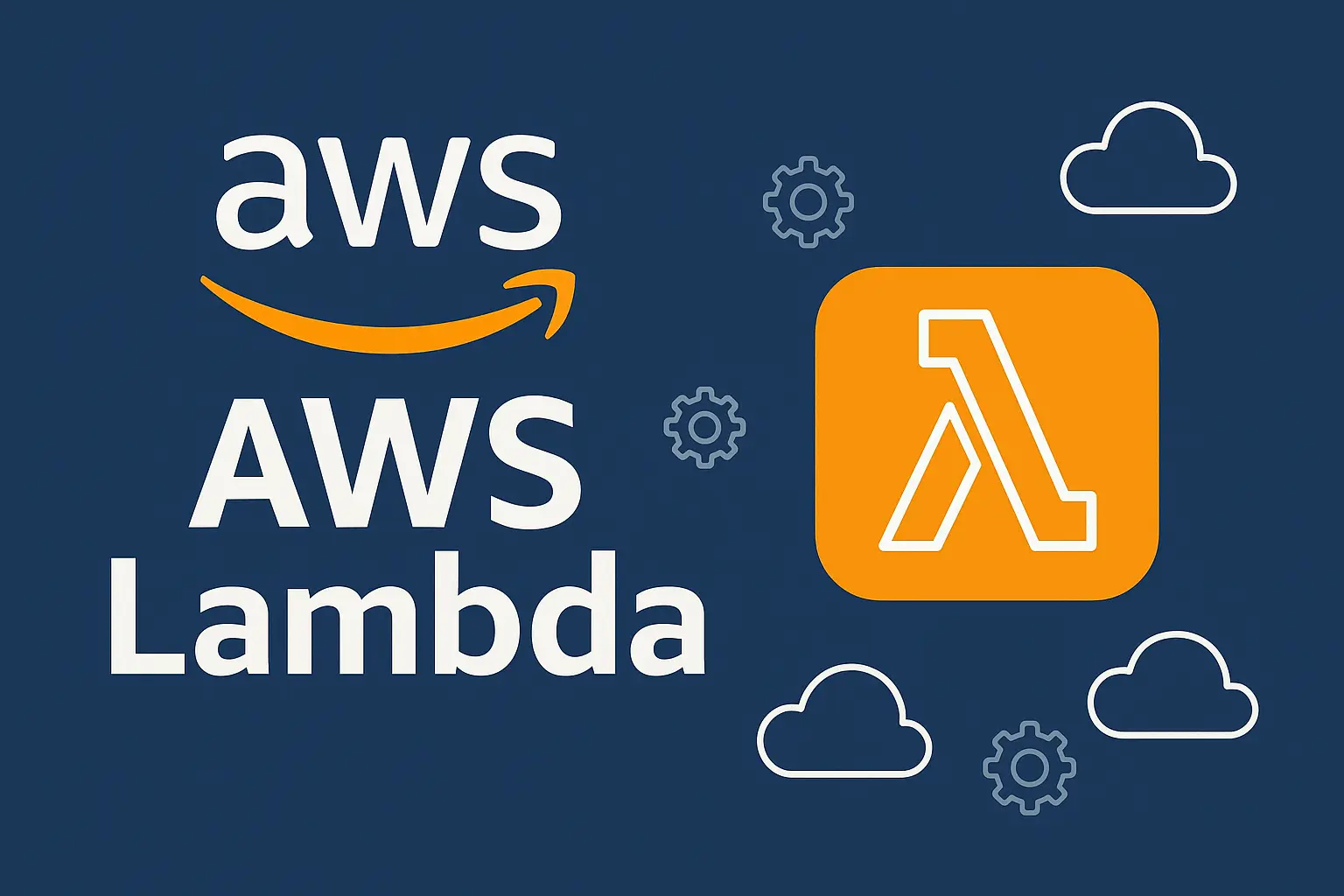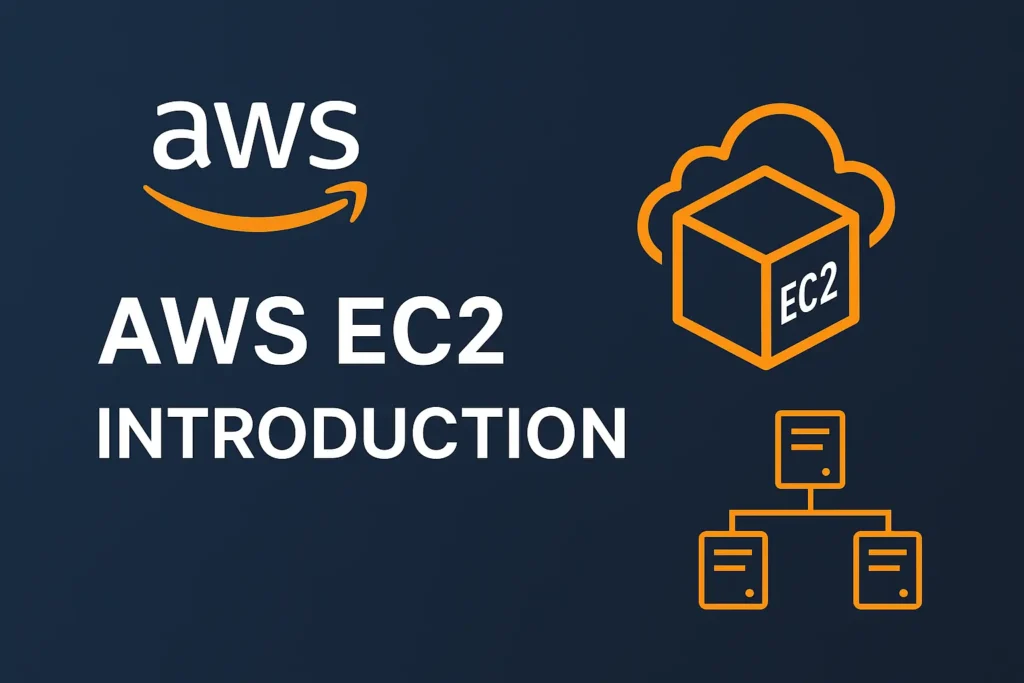AWS Lambda: A Comprehensive Guide to Serverless Computing in Web Development
Amazon Web ServicesAug 16, 2025

AWS Lambda has revolutionized the way developers approach web application development by introducing truly serverless computing to the mainstream. As organizations continue to migrate towards cloud-native architectures, understanding and implementing serverless technologies has become crucial for modern web development. This comprehensive guide explores AWS Lambda’s capabilities, architecture, use cases, and best practices for web developers looking to leverage serverless computing for scalable, cost-effective applications.
Table of Contents
Serverless computing represents a paradigm shift where developers can focus exclusively on writing business logic while cloud providers handle all infrastructure management tasks. AWS Lambda, Amazon’s flagship serverless compute service, exemplifies this approach by automatically managing server provisioning, scaling, patching, and maintenance
What is AWS Lambda
AWS Lambda is a serverless compute service that executes code in response to events without requiring developers to provision or manage servers. Lambda runs code on high-availability compute infrastructure and performs all administration of compute resources, including server and operating system maintenance, capacity provisioning, automatic scaling, and logging.
Key Characteristics
- Event-Driven Execution: AWS Lambda functions execute in response to triggers such as HTTP requests, file uploads, database changes, or scheduled events. This event-driven model makes it ideal for building reactive, microservices-based architectures.
- Automatic Scaling: The service automatically scales function instances based on incoming request volume, handling anything from a few requests per day to thousands of concurrent executions.
- Pay-Per-Use Model: Users only pay for compute time consumed, measured in milliseconds, with no charges when functions aren’t running. This billing model makes Lambda extremely cost-effective for variable workloads.
- Stateless Execution: Lambda functions are inherently stateless, meaning each invocation is independent and doesn’t retain information from previous executions. This design enables unlimited horizontal scaling.
Architecture and How It Works
Lambda Function Architecture
AWS Lambda’s architecture consists of several key components that work together to provide seamless serverless execution:
- Function Code: The actual business logic written in supported programming languages, packaged as either ZIP files or container images.
- Runtime Environment: Language-specific execution environments that handle invocation events, context information, and responses between Lambda and functions.
- Event Sources: Services or applications that trigger Lambda function execution, including API Gateway, S3, DynamoDB, SQS, and many others.
- Execution Environment: Secure, isolated runtime environments where functions execute, managed entirely by AWS.
Invocation Models
Lambda supports two primary invocation models:
- Synchronous Invocation (Push): Direct invocation where the caller waits for the function response, commonly used with API Gateway for web applications.
- Asynchronous Invocation (Pull): Lambda polls event sources like SQS queues or Kinesis streams, processing events as they become available.
Concurrency and Scaling
Lambda implements sophisticated concurrency management:
-
Unreserved Concurrency: Default limit of 1,000 concurrent executions per region
-
Reserved Concurrency: Function-specific limits to ensure performance isolation
-
Provisioned Concurrency: Pre-warmed instances to eliminate cold starts for latency-sensitive applications
Supported Programming Languages and Runtimes
AWS Lambda supports multiple programming languages through managed runtimes:
Native Runtime Support
- Python: Versions 3.9 through 3.13, ideal for data processing, web APIs, and automation scripts.
- Node.js: Versions 18, 20, and 22, excellent for web applications and microservices due to fast startup times.
- Java: Versions 8, 11, 17, and 21, suitable for enterprise applications despite longer cold start times.
- C# (.NET): Versions 6, 8, and 9, providing strong typing and performance for Windows-centric organizations.
- Go: Highly performant with fast cold starts, perfect for high-throughput applications.
- Ruby: Versions 3.2, 3.3, and 3.4, offering rapid development cycles.
- PowerShell: For Windows automation and administration tasks.
Performance Considerations
- Cold Start Performance: Languages like Python, Node.js, and Go typically have faster initialization times compared to Java and C#.
- Runtime Efficiency: Compiled languages (Go, Java) often provide better execution performance but may have longer startup times.
- Memory and CPU Allocation: Higher memory configurations provide proportionally more CPU power, improving performance for compute-intensive tasks.
Comprehensive Use Cases for Web Development
1. Serverless Web Applications
Lambda enables building scalable web applications using the JAMstack architecture:
-
Frontend: Static assets hosted on S3 and distributed via CloudFront
-
Backend: Lambda functions handling API requests through API Gateway
-
Database: DynamoDB or RDS for data persistence
-
Authentication: Cognito for user management
This architecture provides automatic scaling, high availability, and cost efficiency for web applications with variable traffic patterns.
2. API Development and Microservices
Lambda excels at building RESTful APIs and microservices architectures:
- Scalable APIs: Each API endpoint can be implemented as a separate Lambda function, enabling independent scaling and deployment.
- Microservices Implementation: Break monolithic applications into discrete, manageable services that communicate through events.
- GraphQL APIs: Use AWS AppSync with Lambda resolvers to build flexible, efficient GraphQL APIs.
3. Real-Time Data Processing
Lambda integrates seamlessly with streaming services for real-time data processing:
- Stream Processing: Process Kinesis streams for real-time analytics, monitoring, and alerting.
- IoT Data Processing: Handle sensor data from IoT devices with automatic scaling based on device activity.
- Log Analysis: Real-time processing of CloudWatch logs for security monitoring and troubleshooting.
4. File and Media Processing
Automated file processing workflows are ideal Lambda use cases:
- Image Processing: Generate thumbnails, resize images, or apply filters when files are uploaded to S3.
- Document Conversion: Convert documents between formats (PDF, HTML, DOCX) on-demand.
- Video Processing: Basic video manipulation tasks like thumbnail extraction or format conversion.
5. Scheduled Tasks and Automation
Lambda functions can be triggered by CloudWatch Events for automation:
- Database Cleanup: Automated deletion of old records, data archiving, and maintenance tasks.
- Report Generation: Scheduled creation of business reports, analytics summaries, and data exports.
- Infrastructure Monitoring: Automated checks for idle resources, cost optimization, and compliance auditing.
6. Integration and Workflow Orchestration
Lambda serves as glue code for integrating various services:
- Third-Party API Integration: Connect to external services while handling authentication, rate limiting, and error handling.
- Workflow Automation: Use Step Functions to orchestrate complex, multi-step business processes.
- Data Pipeline Processing: ETL operations for moving and transforming data between systems.
Key Features and Capabilities
Deployment and Packaging
- ZIP File Archives: Traditional deployment method for functions under 250MB.
- Container Images: Deploy functions as container images up to 10GB, enabling complex dependencies and custom runtimes.
- Lambda Layers: Share common dependencies, libraries, and custom runtimes across multiple functions. Layers reduce deployment package sizes and promote code reuse.
Environment and Configuration
- Environment Variables: Store configuration data, API keys, and runtime parameters securely.
- VPC Integration: Connect functions to private network resources while maintaining security.
- IAM Integration: Fine-grained access control using IAM roles and policies.
Monitoring and Observability
- CloudWatch Integration: Built-in logging, metrics collection, and alarm capabilities.
- X-Ray Tracing: Distributed tracing for complex, multi-service applications.
- Custom Metrics: Application-specific metrics and business KPIs monitoring.
Advantages and Disadvantages of AWS Lambda
Advantages of AWS Lambda
Cost Efficiency
Lambda’s pay-per-use model provides significant cost advantages:
- No Idle Costs: Pay only for actual execution time, not provisioned capacity.
- Automatic Scaling: Resources scale to zero when not in use, eliminating waste.
- Reduced Operational Overhead: No server management, patching, or maintenance costs.
Development Productivity
- Faster Time-to-Market: Focus on business logic rather than infrastructure management.
- Simplified Operations: Automatic scaling, fault tolerance, and high availability built-in.
- Event-Driven Architecture: Natural fit for modern, reactive application designs.
Scalability and Performance
- Automatic Horizontal Scaling: Handle traffic spikes without manual intervention.
- Global Availability: Deploy functions across multiple regions for improved performance.
- Built-in Fault Tolerance: Automatic retries, dead letter queues, and error handling.
Disadvantages of AWS Lambda
Execution Constraints
- Timeout Limits: Maximum execution time of 15 minutes per invocation.
- Memory Limitations: Maximum 10GB memory allocation per function.
- Payload Restrictions: 6MB maximum payload size for synchronous invocations.
- Package Size Limits: 250MB maximum for unzipped deployment packages.
Performance Considerations
- Cold Start Latency: Initial invocation delays when creating new execution environments.
- Concurrency Limits: Default 1,000 concurrent executions per region.
- State Management: Stateless nature requires external storage for persistent data.
Operational Challenges
- Vendor Lock-in: Tight coupling with AWS services and APIs.
- Debugging Complexity: Distributed nature makes troubleshooting more challenging.
- Monitoring Overhead: Requires sophisticated observability strategies for complex applications.
Pricing Model and Cost Optimization
Pricing Components
Request Charges: $0.20 per million requests after the first million free requests monthly.
Duration Charges: Based on memory allocation and execution time, with tiered pricing for high-volume usage:
-
x86 Architecture: $0.0000166667 per GB-second for first 6 billion GB-seconds
-
ARM64 Architecture: $0.0000133334 per GB-second with better price-performance ratio
Provisioned Concurrency: Additional charges for pre-warmed instances to eliminate cold starts.
Cost Optimization Strategies
Right-Sizing Memory: Balance performance and cost by optimizing memory allocation.
ARM64 Architecture: Use Graviton2 processors for up to 20% better price-performance.
Efficient Code: Optimize execution time to reduce duration charges.
Layer Utilization: Share dependencies across functions to reduce deployment package sizes.
Security Best Practices
IAM and Access Control
- Least Privilege Principle: Grant only necessary permissions to function execution roles.
- Function-Specific Roles: Create dedicated IAM roles for each function to limit blast radius.
- Resource-Based Policies: Control which services and accounts can invoke functions.
Network Security
- VPC Configuration: Deploy functions in private subnets for sensitive workloads.
- Security Groups: Control network traffic with properly configured security groups.
- Endpoint Security: Use VPC endpoints for secure communication with AWS services.
Code and Configuration Security
- Environment Variable Encryption: Encrypt sensitive configuration data using KMS.
- Dependency Management: Regularly update dependencies and scan for vulnerabilities.
- Code Scanning: Use AWS Inspector or third-party tools for vulnerability assessment.
Best Practices for Web Development
Architecture Design
Single Responsibility: Design functions to perform specific, well-defined tasks.
Event-Driven Design: Leverage asynchronous communication patterns for loose coupling.
Stateless Implementation: Store state externally in databases or caching layers.
Performance Optimization
Connection Reuse: Implement connection pooling for database and external service connections.
Efficient Packaging: Minimize deployment package sizes and optimize dependency loading.
Warm-Up Strategies: Use provisioned concurrency for latency-critical applications.
Monitoring and Operations
Comprehensive Logging: Implement structured logging with appropriate log levels.
Distributed Tracing: Use X-Ray for understanding request flows across services.
Alerting Strategy: Set up proactive monitoring and alerting for critical metrics
References:
- AWS Lambda – Serverless Computing Service
- AWS Lambda Features and Benefits
- AWS Lambda Use Cases and Applications
- AWS Lambda Pricing and Cost Structure
- AWS Lambda Architecture and Limitations
- Serverless Computing Best Practices
Conclusion
AWS Lambda represents a fundamental shift in how web developers approach application architecture and deployment. By abstracting away infrastructure management, Lambda enables developers to focus on creating value through business logic rather than operational concerns. The service’s automatic scaling, pay-per-use pricing, and extensive ecosystem integration make it an compelling choice for modern web applications.
However, successful AWS Lambda adoption requires understanding its constraints and designing applications accordingly. Cold start latency, execution time limits, and the stateless execution model necessitate careful architectural planning. Organizations must also invest in monitoring, security, and operational practices suited to distributed, event-driven systems.
The future of serverless computing looks increasingly bright, with continuous improvements in performance, developer experience, and ecosystem maturity. As Lambda and similar services evolve, they will likely become even more central to cloud-native application development, enabling developers to build more scalable, resilient, and cost-effective web applications.
For web developers considering serverless adoption, AWS Lambda offers a mature, feature-rich platform that can significantly accelerate development cycles while reducing operational overhead. Success with AWS Lambda requires embracing its event-driven, stateless paradigm and leveraging the broader AWS ecosystem for comprehensive application solutions.
The key to maximizing AWS Lambda’s benefits lies in thoughtful architecture design, comprehensive monitoring implementation, and continuous optimization based on real-world usage patterns. Organizations that invest in serverless expertise and best practices will find themselves well-positioned to take advantage of the scalability, cost-efficiency, and agility that serverless computing provides.
